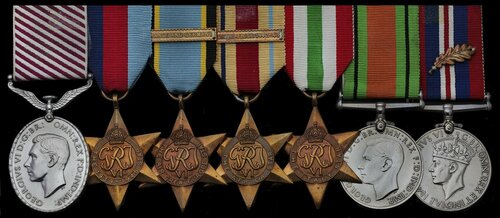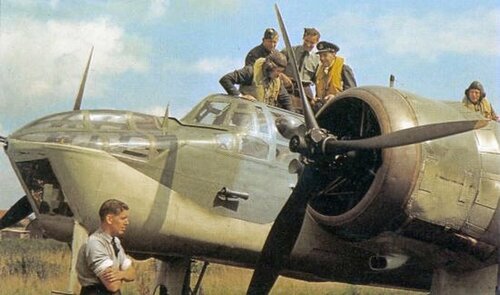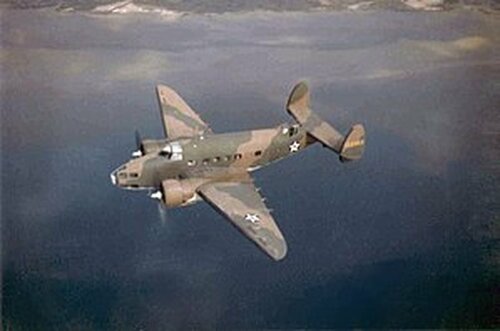Auction: 21002 - Orders, Decorations and Medals
Lot: 255
A 1944 A.F.M. group of seven awarded to Flight Sergeant, later Flying Officer J. I. Parry, Royal Air Force, a bomber pilot during the Battle for France who later flew vital transport runs to Malta as the Island attempted to resist the Axis siege
Air Force Medal, G.VI.R. (550608. F/Sgt. J. I. Parry. R.A.F.); 1939-45 Star; Air Crew Europe Star, clasp, France and Germany; Africa Star, clasp, North Africa 1942-43; Italy Star; Defence and War Medals 1939-45 with M.I.D. oak leaf, minor pitting, very fine (7)
A.F.M. London Gazette 1 January 1944. The original recommendation, from Transport Command, states:
'(Total flying hours 1200). This airman was one of the original WOP/AG on the aircraft delivery route. From January, 1941 until April, 1943 he was operator for a leading convoy working over routes to Iraq, India and South West Africa and is in fact a pioneer on all routes covered by the A.D.U. He is now employed in a Transport Squadron where his high sense of duty is still markedly present.'
John Ivor Parry served with No. 139 Squadron, flying Blenheim's in France during early 1940 with the rank of Aircraftman Class I. They flew constant missions, often suffering severely from enemy fire, as Parry himself states, quoted in Valiant Wings:
'The Blenheim we flew on 16 May 1940 (…) was so shot-up by flak and fighters it was a write-off on our return to Plivot. My job on the 18th was pouring petrol onto it, along with Wing Commander Dickens' Blenheim and setting fire to them. Last job was blowing the petrol and bomb dumps which shook that part of France.'
Despite the heavy fighting Parry survived and managed to escape the fall of France, even celebrating his 21st birthday in Paris with a bottle of cool champagne. Having returned to Britain he transferred to No. 24 Squadron flying supplies to the Middle East, Africa and Malta carrying on his role at the radio with the rank of Flight Sergeant. No. 24 Squadron was a vital supply link during the Siege of Malta although their transports were horribly vulnerable to enemy fighters. Even after the siege ended in November 1942 as one passage in The Malta Shuttle Service makes clear:
'...as passengers a nurse and a submarine captain. The navigator was Flight Lieutenant F. Harrison and the wireless operator Flight Sergeant Parry. (…) He became suddenly aware of a Junkers 88 on the port quarter of the Hudson. The enemy opened fire and Harrison hastily moved forward to inform the pilot who immediately dived from 10,000 feet down to sea level. The enemy, none-the-less, had in that time managed to get in a second attack on the tail and hits were registered on the Hudson. Both passengers were wounded, and the radio, trimming tabs and the petrol tanks, about 110 gallons were lost.'
Continuing to fly with transport units Parry was transferred to No. 1 Aircraft Delivery Unit. By the end of the War Parry joined the General Duties Branch, being promoted Pilot Officer on 25 September 1945. He relinquished his rank having been promoted Flying Officer on 1 September 1950; sold together with copied research including London Gazette and Air Force List entries also extracts from Transport Command documents, Seek and Strike and Valiant Wings as well as a pair of AG wings.
Subject to 20% VAT on Buyer’s Premium. For more information please view Terms and Conditions for Buyers.
Sold for
£2,200
Starting price
£950









